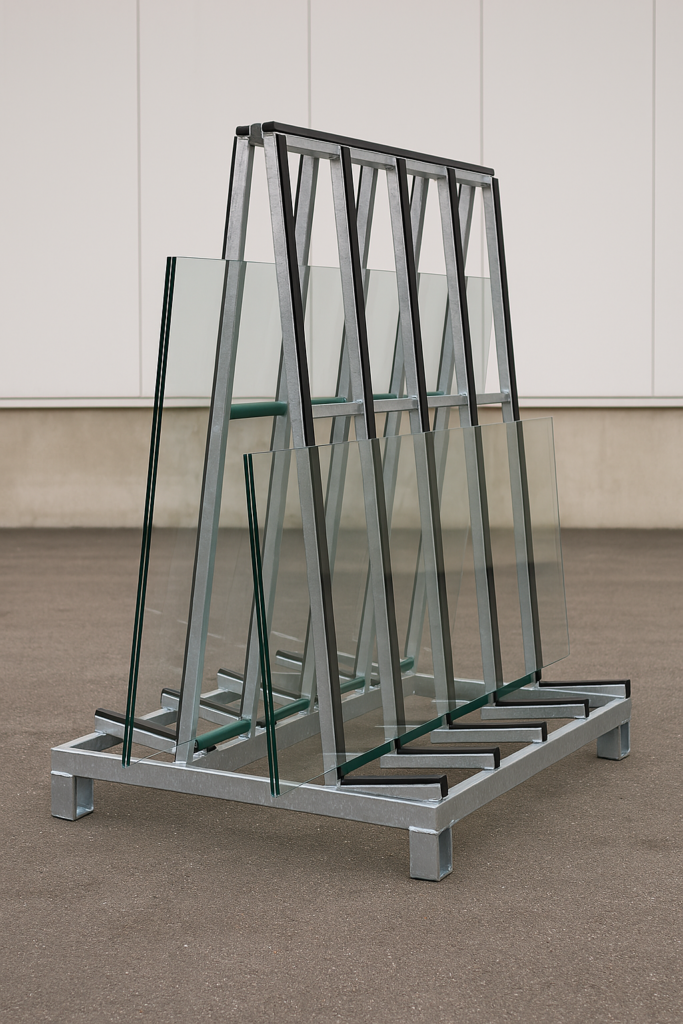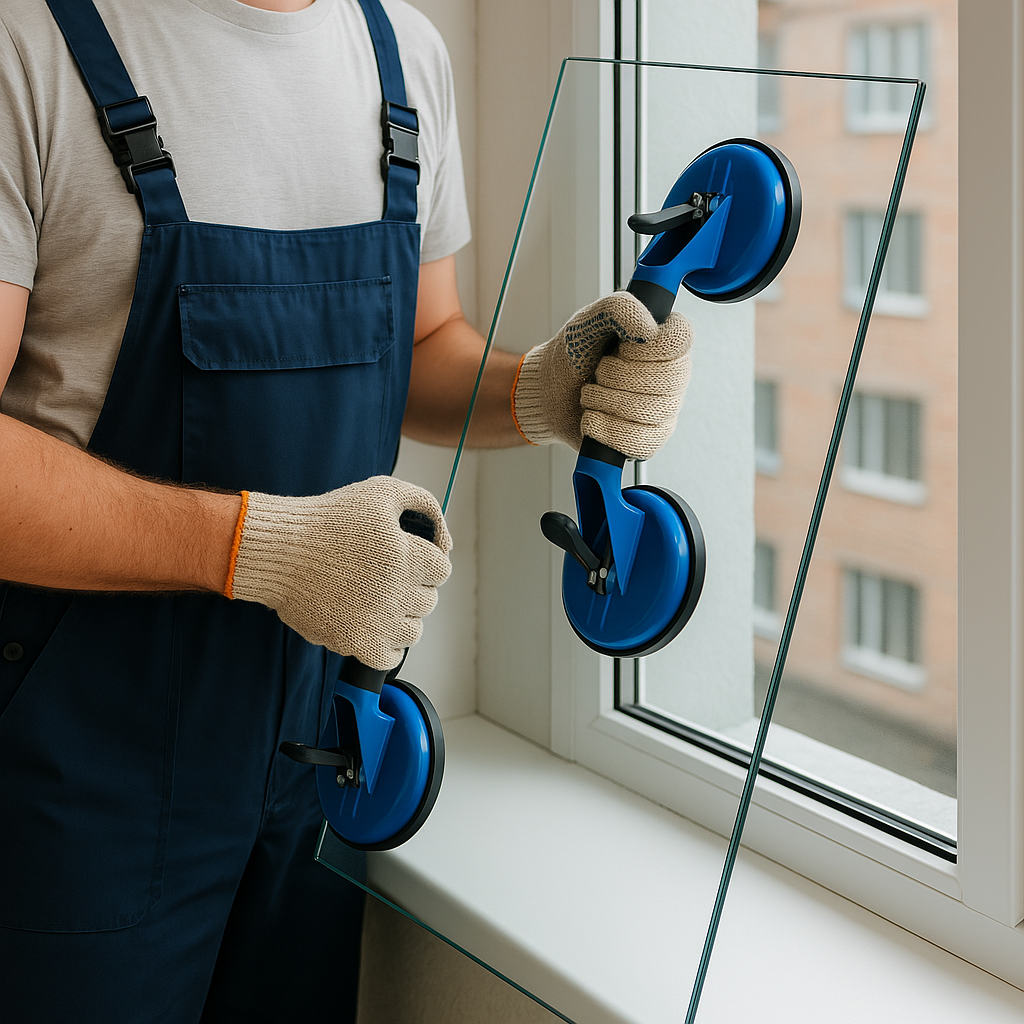In the world of modern architecture and interior design, glass installation is more than just a functional task—it’s a fine art. From commercial skyscrapers to custom shower enclosures and stylish glass railings, glass plays a crucial role in aesthetics and performance. However, achieving a perfect glass installation requires expertise, the right tools, and meticulous attention to detail.
In this article, we’ll explore the critical aspects of professional glass installation, including the best practices for glass handling, proper glass transportation, essential tools, and how to select the right glassware handling equipment to ensure safety, precision, and lasting results.
Why Quality Glass Installation Matters
The importance of precise and safe glass installation cannot be overstated. Whether you’re working on residential windows, commercial facades, or custom partitions, every detail impacts both the final look and structural integrity.
Benefits of Professional Glass Installation
- Visual Appeal: Clean lines, perfect alignments, and seamless finishes elevate the overall design.
- Structural Integrity: Correct installation ensures glass panels are secure and withstand environmental stress.
- Energy Efficiency: Properly installed glass helps regulate indoor temperatures.
- Safety: Reduces the risk of breakage or injury from improperly fitted panes.
Poorly done installations can result in leaks, cracks, and even injuries, making it essential to approach each project with care and precision.
Essential Glass Installation Tools for Every Job
Successful glass installation depends on having the right tools. Professional installers rely on a combination of manual tools and modern technology to get the job done safely and accurately.
Must-Have Glass Installation Tools
- Glass Cutters
Used for scoring and snapping glass to desired sizes with precision. - Suction Cups and Lifters
These tools assist with lifting and positioning large glass sheets, minimizing direct hand contact and reducing risk. - Glazing Tools
Includes setting blocks, sealants, and glazing beads for proper fitting and sealing. - Measuring and Leveling Tools
Ensures accurate alignment and spacing during installation. - Protective Gear
Safety glasses, cut-resistant gloves, and non-slip boots are essential for safe handling.
Investing in high-quality glass installation tools not only improves efficiency but also enhances safety and accuracy.
Safe Glass Handling: Best Practices and Equipment
Handling glass can be dangerous if not done correctly. Sharp edges, fragile surfaces, and heavy panels require specific techniques and equipment to prevent damage and injuries.
Glass Handling Best Practices
- Always wear protective gloves and goggles.
- Lift glass vertically using both hands or suction tools.
- Store glass upright on padded A-frame racks to prevent stress cracks.
- Never drag glass across surfaces to avoid scratches.
Top Glass Handling Equipment
- A-Frame Glass Racks: Provide secure storage and movement of large panes.
- Glass Dollies and Carts: Make transportation across job sites easier and safer.
- Edge Protectors and Padding: Prevent chips and breaks during movement or storage.
Using the right glass handling equipment ensures safety for workers and reduces costly material damage.

Ensuring Secure Glass Transportation
Glass transportation is one of the most delicate stages of any project. Even minor movements during transit can cause chips or fractures if not handled properly.
Tips for Safe Glass Transportation
- Use Proper Racks: Always use vertical A-frame racks padded with rubber or foam.
- Strap Glass Securely: Fasten glass sheets using rubber straps to prevent shifting.
- Drive Smoothly: Avoid potholes, sharp turns, and sudden braking when transporting.
- Separate Glass Panels: Use dividers or spacers to prevent friction and scratching.
Efficient glass transportation reduces the risk of on-site delays and damaged products.
The Role of Glassware Handling Equipment
While general glass handling tools are essential, specialized glassware handling equipment is required for delicate or custom-cut glass items. These tools are designed to offer greater control and minimize the chance of mishandling.
Examples of Glassware Handling Equipment
- Vacuum Lifters: Used for large glass panes and offer strong grip without scratching.
- Rotating Lifting Devices: Ideal for fitting glass in tight angles or elevated positions.
- Compact Cranes and Boom Lifts: Useful for high-rise or overhead installations.
Investing in the right glassware handling equipment saves time and ensures quality, especially for high-end architectural or artistic projects.
Planning and Executing a Glass Installation Project
Executing a flawless glass installation project takes more than just tools—it requires planning, skill, and attention to every phase of the process.
Steps for a Successful Glass Installation
- Site Assessment
Analyze access points, weight limits, and installation conditions. - Material Preparation
Double-check glass dimensions, finishes, and edge treatments. - Pre-Installation Setup
Clean surfaces, prep seals, and gather necessary tools. - Safe Installation Process
Use proper lifting methods and tools to avoid cracks or misalignment. - Finishing and Sealing
Apply weatherproofing sealants and double-check alignment. - Final Inspection
Verify that the glass is secure, clean, and free from flaws or imperfections.
By following a structured approach, you avoid mistakes that lead to rework or safety concerns.
Common Mistakes to Avoid During Glass Installation
Even experienced professionals can make errors. Recognizing and avoiding these common mistakes helps ensure a successful project.
- Skipping Measurement Checks: Always measure twice to prevent size mismatches.
- Neglecting Edge Protection: Edges are the most vulnerable—protect them at all times.
- Improper Sealing: Inadequate sealing can lead to water intrusion or air leakage.
- Using the Wrong Tools: Using non-specialized tools may damage the glass surface.
Avoiding these pitfalls improves the quality and longevity of your glass installations.
Glass Installation in Modern Architecture and Design
With rising trends in minimalism and open-concept design, glass is more popular than ever in homes, offices, and commercial buildings. From full-length windows to sleek glass partitions, mastering the art of glass installation gives professionals a competitive edge.
Popular Glass Applications Today
- Glass Railings: For balconies and staircases
- Frameless Showers: Clean and contemporary bathroom styles
- Glass Curtain Walls: Used in commercial high-rise buildings
- Glass Partitions: Modern office designs for openness and light
No matter the application, precise and secure installation is critical for safety and visual appeal.
Conclusion: Mastering the Craft of Glass Installation
Glass installation is both a science and an art. With the right tools, techniques, and equipment, professionals can deliver installations that are not only safe and functional but also visually stunning. From glass handling and transportation to the use of glassware handling equipment and expert sealing, every detail counts.
Whether you’re a contractor, architect, or DIY enthusiast, understanding the full scope of glass installation helps you create flawless results that stand the test of time.
Take the time to master every detail—and your glass projects will reflect true craftsmanship.

